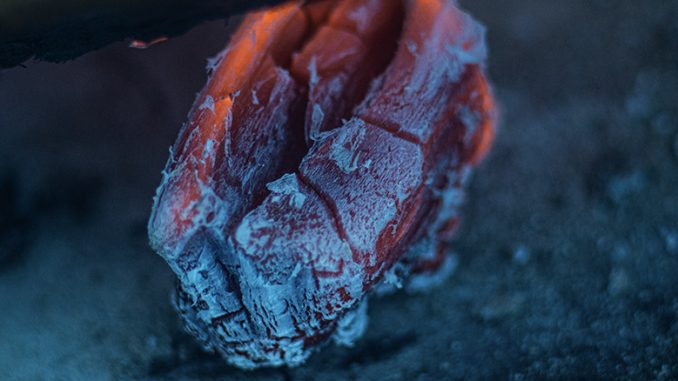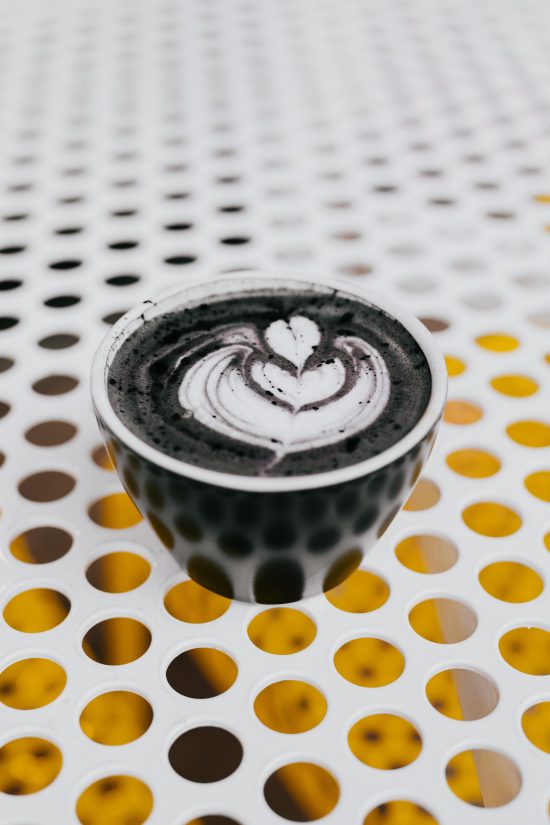
Visually striking, charcoal is one of the latest trends in the coffee world—but is it safe to consume?
BY EMILY JOY MENESES
SPECIAL TO BARISTA MAGAZINE ONLINE
Cover photo sourced from Unsplash
In recent years, the food and beverage industry has been fascinated with activated charcoal, enamored with its proposed health benefits and unmistakable inky color. Charcoal lemonade, charcoal ice cream, charcoal cocktails, and, alas, charcoal lattes, have now found their way into the menus of well-known restaurants and cafés around the world. For this particular installment of “Know Your Ingredients,” we’re analyzing how the ingredient first rose to popularity and what its elusive, dark-gray presence means for the coffee world.

The origins of activated charcoal
Today, we know activated charcoal as a popular ingredient in the modern health and wellness industry, but its use can be traced back to ancient times. Centuries ago, Ayurvedic and Eastern healers would utilize the ingredient as a teeth whitener and to cleanse toxicity from the body. Modern science backs up their claims of charcoal as a detoxifying agent—research shows that charcoal has immense absorption power; it essentially binds to molecules in the body, drawing them out to be eliminated as waste.
Potential health risks
Activated charcoal’s detoxifying properties make it a well-known remedy for hangovers and stomach pain caused by gas or indigestion. However, there are potential health risks: Charcoal’s absorption power isn’t selective. This means that while charcoal does bind to toxic elements in the body, it may also absorb nutrients the body needs, resulting in malnutrition if consumed too frequently.
In addition, charcoal could potentially absorb any medicine the individual has taken, including ibuprofen and birth control, thus rendering the meds ineffective. Because of this, doctors recommend that charcoal be consumed in small amounts and at least two hours before or after taking any prescription medication.
How it is made
Before consuming activated charcoal, one can’t help but wonder how it gets made. In charcoal food and beverages, you’ll specifically find food-grade activated charcoal—which is completely different from the charcoal you’d use for barbecues or bonfires. Food-grade activated charcoal is most often created by heating coconut shells until they burn; the coconut ash is then processed with hot air or steam. All of this is done at extremely high temperatures, to “activate” the charcoal and grant it its detoxifying properties.
Charcoal in food and beverages
Now, to the real question: How does it taste? To most, not like much. While charcoal can add a subtly grainy texture to food and lend beverages its unique inky color, it doesn’t do too much in terms of flavor. More often than not, you’ll see charcoal lattes infused with more robust ingredients like lemon, ginger, honey, rose, or lavender.
Before experimenting with this ingredient for its visual appeal, we recommend doing your own research on its health implications—especially if you’re on any form of medication. As with anything else, be conscious of your body’s unique needs, and enjoy this trendy ingredient in moderation.

ABOUT THE AUTHOR
Based in Los Angeles, Emily Joy Meneses (she/her) is a writer and musician passionate about culture and collective care. You can regularly find her at Echo Park Lake, drinking a cortado and journaling about astrology, art, Animal Crossing, and her dreams. Explore her poetry, short stories, and soundscapes on her website.

